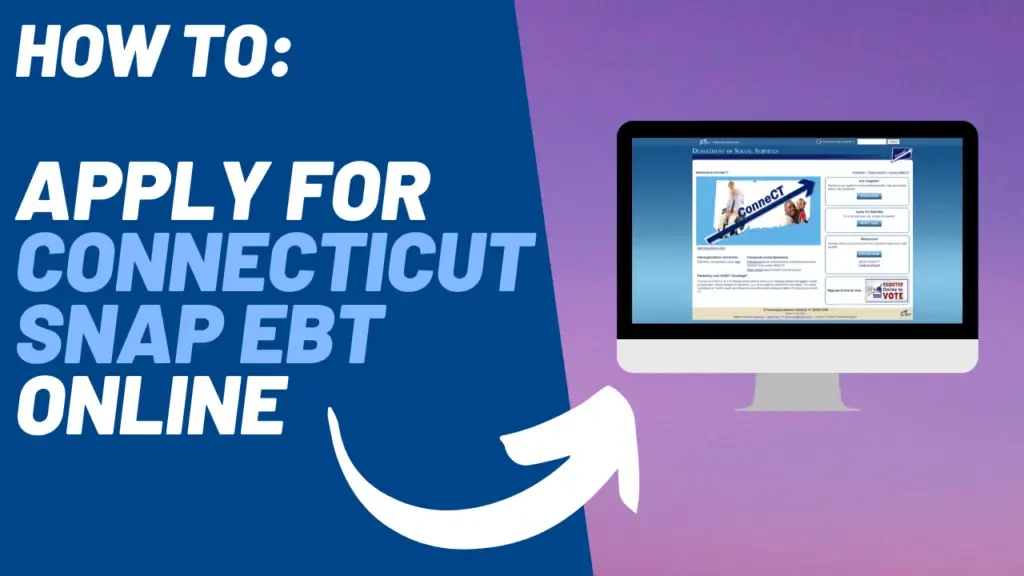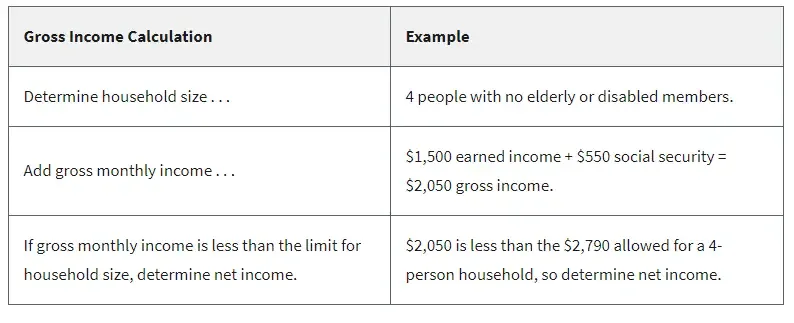Are you a resident of Connecticut and are looking for information on the Connecticut food stamps online application? You’ve come to the right place – we can help!
In fact, we have helped countless of our readers successfully apply for food stamps. In this article, we will provide you with all the information you need to submit a successful application for food assistance benefits.
We’ll also provide you with the food stamps eligibility criteria so you can determine if you qualify for benefits, including income guidelines.
For a step-by-step guide on the application process, including what happens once you are approved for Connecticut food stamp benefits, continue reading below.
How to Apply for Connecticut Food Stamps
For help applying for food assistance benefits in Connecticut, follow the steps listed below.
Step 1: Qualification Guidelines for Food Stamps in Connecticut
Among the eligibility criteria, the income requirement is the most important. You have to meet both the gross income requirement and the net income requirement in order to be approved. The income requirements are based on the number of people that live in your household.
In most cases, your household must meet both the gross and net income limits or you will not be eligible for benefits.
What is gross income?
Gross income means a household’s total, non-excluded income, before any deductions have been made.
What is net income?
Net income means gross income minus allowable deductions.
Income Limit Exemptions
If you live in a household with an elderly or disabled person, you only have to meet the net income limit to qualify.
If all members of your household are receiving:
- Temporary Assistance for Needy Families (TANF), or
- Supplemental Security Income (SSI), or
- General assistance benefits
Then your household may automatically be deemed eligible for SNAP because you have already been determined eligible for another benefits program.
Income Limit Chart for 2023
To see if your total household income meets the limit for 2023, use the chart below.
| Connecticut SNAP Income Eligibility Standards for Fiscal Year 2023 | ||
| Effective October 1, 2022 – September 30, 2023 | ||
| Household Size | Monthly Gross Income (130% of FPL) | Monthly Net Income (100% of FPL) |
| 1 | $1,473 | $1,133 |
| 2 | $1,984 | $1,526 |
| 3 | $2,495 | $1,920 |
| 4 | $3,007 | $2,313 |
| 5 | $3,518 | $2,706 |
| 6 | $4,029 | $3,100 |
| 7 | $4,541 | $3,493 |
| 8 | $5,052 | $3,886 |
| Each Additional Household Member: Add | $512 | $394 |
How do I calculate gross income?
To calculate your gross income, use the chart provided below:
How do I calculate net income?
To calculate your net income, you have to take your gross income and deduct the allowable deductions indicated below.
If you meet both the gross and net income requirements, then you should get approved for benefits. This is the most important of the requirement to receive SNAP.
Allowable Deductions
The following is a list of allowable deductions when calculating your total household net income.
The following deductions are allowed for SNAP:
- A 20-percent deduction from earned income.
- A standard deduction of $193 for household sizes of 1 to 4 people.
- A dependent care deduction when needed for work, training, or education.
- Medical expenses for elderly or disabled members that are more than $35 for the month if they are not paid by insurance or someone else. This is described on the elderly and disabled page.
- Legally owed child support payments.
- A standard shelter deduction for homeless households of $166.81.
- Excess shelter costs as described below.
Excess Shelter Costs
For help determining your excess shelter deduction, please refer to the information below.
The shelter deduction is for shelter costs that are more than half of the household’s income after other deductions.
Allowable shelter costs include:
Fuel to heat and cook with, electricity, water, basic fee for one telephone, rent or mortgage payments and interest, and taxes on the home.
Once you have calculated your allowable deductions, you can use the example below to calculate your total household net income.
| Net Income Calculation: | Example for a 4-person household: |
|---|---|
| Subtract 20% earned income deduction… | $2,050 gross income $1,500 earned income x 20% = $300. $2,050 – $300 = $1,750 |
| Subtract standard deduction… | $1,750 – $193 standard deduction for a 4-person household = $1,557 |
| Subtract dependent care deduction… | $1,557 – $362 dependent care = $1,195 |
| Subtract child support deduction… | $0 |
| Subtract medical costs over $35 for elderly and disabled… | $0 |
| Excess shelter deduction… | See below |
| Determine half of adjusted income… | $1,195 adjusted income/2 = $597.50 (rounded up to $598) |
| Determine if shelter costs are more than half of adjusted income… | $700 total shelter – $598 (half of income) = $102 excess shelter cost |
| Subtract excess amount, but not more than the limit, from adjusted income… | $1,195 – $102 = $1,093 net monthly income |
| Apply the net income test… | Since $1,093 is less than $2,313 allowed for a 4-person household, this household has met the income test. |
Step 2: Complete the Connecticut Food Stamps Application
There are three ways you can apply for SNAP food stamps in Connecticut.
Here’s how you can apply:
Apply Online
The first way to apply is online through the Department of Social Services online benefits portal, ConneCT. This is probably the quickest and easiest option for applying.
To apply online visit the Connecticut food stamps online application at connect.ct.gov or click here.
For step-by-step instructions on how to apply for Connecticut food stamps online, watch our video below.
Apply In-Person
The second method to apply for Connecticut SNAP is to visit the nearest Department of Social Services (DSS) office. To locate the nearest DSS office near you, click here.
Apply by Mail
The third and final way to apply for food assistance in Connecticut is to submit an application by mail. You will first need to download and print the Connecticut SNAP application.
You can download that here: Connecticut SNAP Application
Next, fill out the application. When complete, mail it to your local DSS office or to DSS Service Center at the following address.
DSS Scanning Center
P.O. Box 1320
Manchester, CT 06045-1320
Step 3: Complete the SNAP Interview
After you submit your application, you will be contacted to schedule an interview. There is a DSS case worker assigned to your application who will ask you questions about your application, including your household income.
The case worker’s job is to make sure you really have a need for food assistance and that your application is complete and meets the criteria outlined by the United States Department of Agriculture.
Step 4: Receive Your Connecticut EBT Card
If your interview is successful and you are approved for food stamps, then you will be mailed an EBT Card, which is how you will pay for the food you purchase under the food stamps program. The EBT card is like a debit card.
Each month, your food stamps allocation will be deposited into your EBT Card account, which you can then use to buy food that is approved by the USDA and at approved locations where food stamps EBT Cards are accepted.
Connecticut Food Stamps Application Summary
We hope you found this article on the Connecticut Food Stamps Online Application helpful!
If so, we encourage you to share this article with anyone who may also find it helpful by using the “Share this” button below.
If you have additional questions about the Connecticut SNAP or EBT, please leave those in the comments section below. We are here to help you!
Be sure to check out our other articles about Connecticut Food Stamps and EBT, including:
- How to Check Connecticut EBT Card Balance
- Connecticut EBT Card Discounts & Free Admissions
- Grocery Stores that Accept EBT online
- How to Get 50% off Amazon Prime with EBT
- Eligible Food Stamps Items



